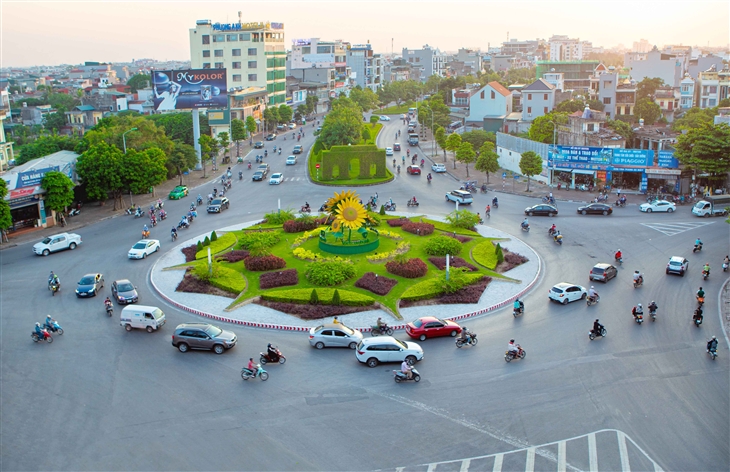DAILY: Domestic coffee prices remained unchanged on May 19, 2025
Monday, May 19,2025
AsemconnectVietnam - According to Kinhtedothi, domestic coffee prices in Vietnam ranged from 124,500 to 125,200 VND/kg on May 19, 2025, and remained unchanged compared to yesterday morning.
Increased supply and rising exchange inventories are the main reasons behind the recent sharp decline in coffee prices. The market continues to monitor developments in trade negotiations between the U.S. and other countries.
In Di Linh, Lam Ha, and Bao Loc districts (Lam Dong province): VND124,500/kg.
In Cu M’gar district (Dak Lak): VND125,000/kg.
In Ea H’leo and Buon Ho (Dak Lak): VND124,900/kg.
In Dak Nong province: VND125,200/kg
In Gia Nghia and Dak R’lap: VND125,100/kg.
In Gia Lai province:
In Chu Prong, Pleiku, and La Grai: VND125,000/kg.
In Kon Tum province: VND125,000/kg.
Global Coffee Market:
At the close of the most recent trading session, Robusta coffee prices in London for July 2025 delivery dropped by USD106/ton to USD4,865/ton; the September 2025 contract fell by USD100/ton to USD4,860/ton.
On the New York exchange, Arabica coffee for July 2025 delivery decreased by 9.35 cents/lb to 365.65 cents/lb; the September 2025 contract fell by 8.85 cents/lb to 362.5 cents/lb.
Weekly Summary:
Last week, both coffee exchanges saw sharp declines – Robusta lost USD361/ton, while Arabica fell by 22.10 cents/lb. Reflecting this trend, domestic prices also declined by an average of VND3,000–3,500/kg. The main reasons for the drop include increased supply and higher inventory levels on the exchanges.
Experts note that the market is closely watching trade negotiations between the U.S. and other countries, as well as the Federal Reserve’s upcoming policy moves. These developments will influence the direction of the U.S. dollar, which in turn affects commodity markets, including coffee.
According to the Vietnam Coffee Forum, Robusta prices have dropped past the gap that had formed on the chart during the April 10, 2025 session. In the past Thursday and Friday sessions, prices also fell below the 200-day moving average, a bearish signal for buyers.
However, the July contract has found support in the USD4,763–4,800/ton range — a strong support level that may attract buyers. If this level holds, there is a good chance for a market rebound.
Meanwhile, expert Nguyen Quang Binh observes that winter has begun in Brazil, with temperatures starting to fall. Frost is a major concern for the country’s coffee crop in the coming months. Additionally, the deteriorating condition of Brazilian ports is causing financial losses. These factors could support rising coffee prices in the future.
Vietnam’s coffee industry targets global reach through quality, branding, and sustainability
Vietnam’s coffee industry is striving to enhance its global competitiveness by focusing on three strategic pillars: quality improvement, branding, and sustainability. According to industry insiders, these factors are key to helping Vietnamese coffee move up the global value chain and reduce its long-standing dependence on raw bean exports.
Despite global challenges, the sector is aiming for an export turnover of around 7 billion USD in 2025, up significantly from 4.2 billion USD in 2023. This target reflects Vietnam's shift from prioritizing volume to increasing value-added production, such as roasted and specialty coffee, which can bring higher returns and elevate Vietnam’s position in the global market.
Historically, Vietnam has been among the top global coffee exporters, largely due to its massive Robusta output. However, the focus on raw material exports has limited brand recognition and left the industry vulnerable to price volatility. To address this, stakeholders are emphasizing investment in processing technology, improved quality control, and building distinct Vietnamese coffee brands that appeal to international consumers.
One major concern is that Vietnam still lacks strong brand visibility overseas. Experts stress the importance of traceability and certification, especially as global markets demand more transparency about origin, sustainability practices, and ethical production. Meeting these standards not only helps build trust but also aligns Vietnamese coffee with requirements from strict markets such as the EU and US.
Sustainability is another critical focus area. Climate change is already affecting coffee-growing regions in Vietnam, particularly in the Central Highlands. In response, farmers and businesses are being encouraged to adopt climate-resilient farming methods, such as intercropping, reforestation, and organic cultivation. These practices not only protect the environment but also boost the long-term productivity and image of Vietnamese coffee.
Government support is also crucial. Policies promoting R&D, upgrading technology, farmer training, and export promotion are helping Vietnamese coffee businesses strengthen their competitiveness. By developing public-private partnerships and tapping into global demand for sustainable, high-quality products, Vietnam’s coffee industry is poised to grow in both volume and value.
If successful, Vietnam will transition from a bulk exporter to a globally recognized coffee powerhouse, driven by innovation and sustainability.
T.Huong
Source: Vitic
Vietnam-Thailand bilateral trade reached over 6.88 billion USD in 4 months
Wide open doors for Tra fish exports to Brazil
Vietnam’s shrimp exports to the EU rebound in Q1/2025: market diversification gains traction amid U.S. tariff policies
Strong demand from China and the U.S. drives Vietnam’s pangasius export growth
DAILY: Domestic pepper prices increased by VND1,000/kg on May 16, 2025
DAILY: Domestic rice prices increased slighlty on May 16, 2025
DAILY: Domestic coffee prices decreased slightly on May 16, 2025
Vietnam’s exports increased in first four months
Vietnam-Malaysia trade exchange reached nearly 4.85 billion USD in 4 months
Exporting agricultural products to the EU: Not quantity but quality
Conquering Japanese market: Opportunity to increase value of Vietnamese rice
Vietnam – New Zealand trade exchange in first 4 months of 2025
Vietnam’s coal imports totaled over 2.5 billion USD in 4 months
Vietnamese durian has more competitors in the billion-people market

Plan of Hai Duong province for a period of 2021 - 2030, ...
Organize space reasonably and harmoniously, focusing on connecting Hai Duong in common development space, actively contributing to the ...Plan of Hau Giang province in a period of 2021 - 2030, ...
Sustainable forestry development program in a period of ...

Art programme honouring Ao dai opens at HCM City Book ...
An art programme to honour and promote traditional cultural values and the beauty and grace of Ao dai has opened in Ho Chi Minh City. It ...From Hanoi to Brussels – a cross-cultural musical journey
Talented youngsters to enjoy int'l football ...
Tien Linh, Thuy Trang win Vietnam Golden Ball 2024
HCM City’s ao dai festival to feature mass folk dance with ...



